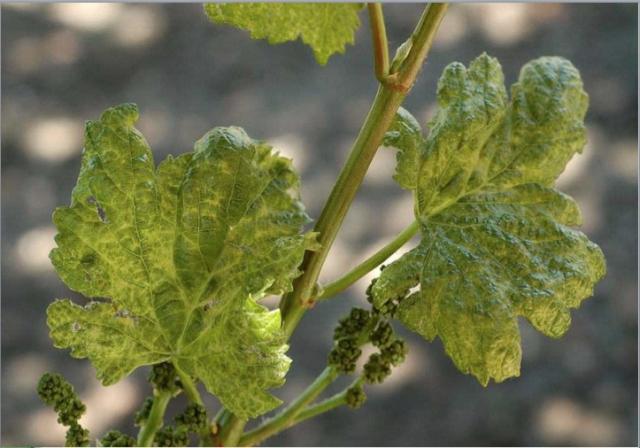Grapevine Pinot Gris Virus

For the first time Grapevine Pinot Gris Virus (GPGV) has been detected in Australia. This virus has been reported in a number of countries including Europe, USA, Canada and China.
Not to be misled by its name, GPGV has been reported in at least 28 separate wine and table grape varieties including Pinot Gris, Chardonnay, Pinot Noir, Merlot, Cabernet Franc, Cabernet Sauvignon and Shiraz.
A recent study detected samples from New South Wales and South Australia that tested positive for GPGV. The positive vines have been destroyed and trace back investigations conducted. Further survey work will be conducted in NSW and SA.
At this point there is no known connection to Western Australia. As a result there are currently no plans to carry out any formal surveillance for GPGV in WA.
Growers are encouraged to familiarise themselves with the symptoms of GPGV infection. These include delayed budburst, leaf distortion and mottling, shortened internodes, increased berry acidity and yield loss.
The leaf distortion and mottling symptoms are most obvious in spring. It is also important to note that infection may not cause any obvious symptoms. See the Australian Wine Research Institute (AWRI) Fact Sheet - Grapevine Pinot Gris Virus for more information.
GPGV is still categorised as an exotic plant pest and therefore, it is important that:
- You promptly call the Exotic Plant Pest Hotline (1800 084 881) or make a report using MyPestGuide Reporter if you observe symptoms in grapevines similar to that described above.
- If you are planting a new vineyard, you speak to your supplier of propagation material to determine virus status of the material.
- If you are undertaking top-working of existing vines, you determine the virus status of both the rootstock (existing vine) and the budwood for grafting.
- You should be vigilant and observant at all times when moving about your vineyard and investigate and report anything unusual.
The biosecurity tools MyPestGuide Grapes and MyPestGuide Reporter are useful tools to help you identify and report pest issues.
